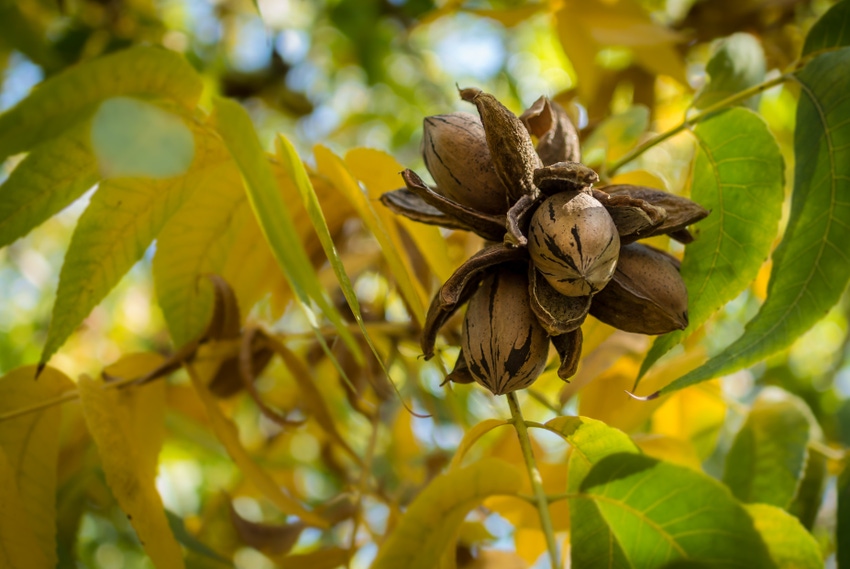
Growers of America’s “native nut” voted overwhelmingly in favor of a federal marketing order one year ago. This summer the American Pecan Council is gearing up to market and promote pecans, invest in research and establish quality, grade and size standards.
“We’re starting from scratch,” said Philip Arnold, a member of the American Pecan Council and a long time New Mexico pecan grower and buyer who gave a laundry list of activities the new organization has been undertaking.
That includes the hiring of an executive director and staff who are working out of the American Pecan Council’s new office in Ft. Worth, Texas. Tree Nut Farm Press spoke with Byron Gossett, the executive director about how the Federal Marketing Order establishing the APC would benefit the pecan industry in three ways:
“First, the FMO creates a funding mechanism, for the first time, that allows the creation of a comprehensive messaging campaign to the American consumer about the positive traits of the American Pecan,” said Gossett. “This will ultimately stabilize and increase demand.
“Second, the FMO presents the opportunity and funding to pursue an objective crop estimate process that is crucial to an improved price discovery methodology for the American Pecan. Third, and perhaps most important, the FMO provides the platform for unifying a traditionally fragmented industry and leverages the experience, insight and creativity of industry leaders (including growers, shellers and handlers) throughout the 15 pecan-producing states.”
Gossett said the funding allows for a home office and professional staff. The latter will be guided by an elected 34 member governing body (17 voting members/17 alternates). The APC will coordinate with staff by means of standing committees, special working groups and, at least, two meetings each annually.
The marketing and promotion web site for the APC, www.americanpecan.com is up and running, said Chris Nissen with the USDA’s Agricultural Marketing Service, which provides oversight for all the producer-funded checkoff programs in the country.
To fund the council’s efforts, grower assessments have been determined. Growers of improved varieties of pecans will pay three cents per inshell pound while growers of native varieties or substandard nuts will pay two cents per inshell pound. The assessments will be retroactive to Oct. 1, 2016.
Industry sources said this year’s pecan crop is on track to outpace the 2016 crop. Arnold, who watches pecan crops from bud out to harvest, said crop estimates have historically been difficult to pin down.
“Pecans are unique among tree nut production in the U.S. in that production areas are in 15 states rather then just one or two. The other reason is the number of acres of native or “unimproved” pecans,” Arnold said. Depending on price and crop size, they may not be harvested.
There have been two crop estimates announced this year. One from the tri-states of Louisiana, Arkansas and Mississippi reports a total U.S. production of 292 million in-shell pounds. A second estimate in July from Texas predicted 301 million pounds. Arnold said the Council is also expected to have a U.S. crop estimate later in the year.
The potential is there for a slightly larger U.S. crop, Arnold said. The 2016 total was 270 million pounds. Drought in some production areas or hurricanes in Georgia and Texas could change the outcome.
Georgia is by far the largest producer of pecans in the U.S. with New Mexico and Texas second and third. Texas and Oklahoma both have large numbers of native pecan acres and their production can vary widely from year to year.
Arnold said a reporting requirement in the FMO is aimed a securing more accurate crop size and harvest numbers, something that has been difficult to achieve in recent years.
“We want good, viable figures on crop size. Accurate reports will serve the industry," he said.
With more western pecan production in recent years, some of the dynamics of the pecan industry are changing. Arnold said that two-thirds of the high-value Georgia pecans are exported to China. Western region production is going to a shelled product because of its uniformity in size, making shelling operations more efficient.
California pecan grower Mark Hendrixson said this year’s crop appears average in size. Pecan trees in California tend to have smaller production swings that those in other states. With kernel fill underway in August and September, he said water management would be critical to finish off this crop.
Hendrixson, president of the California Pecan Growers Association, said increased production and competition for the China market makes the marketing and promotion component of the FMO critical for growers. He is also hopeful that research efforts will allow the council to promote health and nutrition benefits of pecans.
For more information, click on www.Americanpecan.com or send an email to [email protected].
About the Author(s)
You May Also Like




